A British-Bangladeshi writer’s new cookbook steeped in nostalgia showcases seasonal and regional recipes to highlight the uniqueness of Bangladeshi cuisine, often lost under the umbrella of ‘Indian food’ in the West
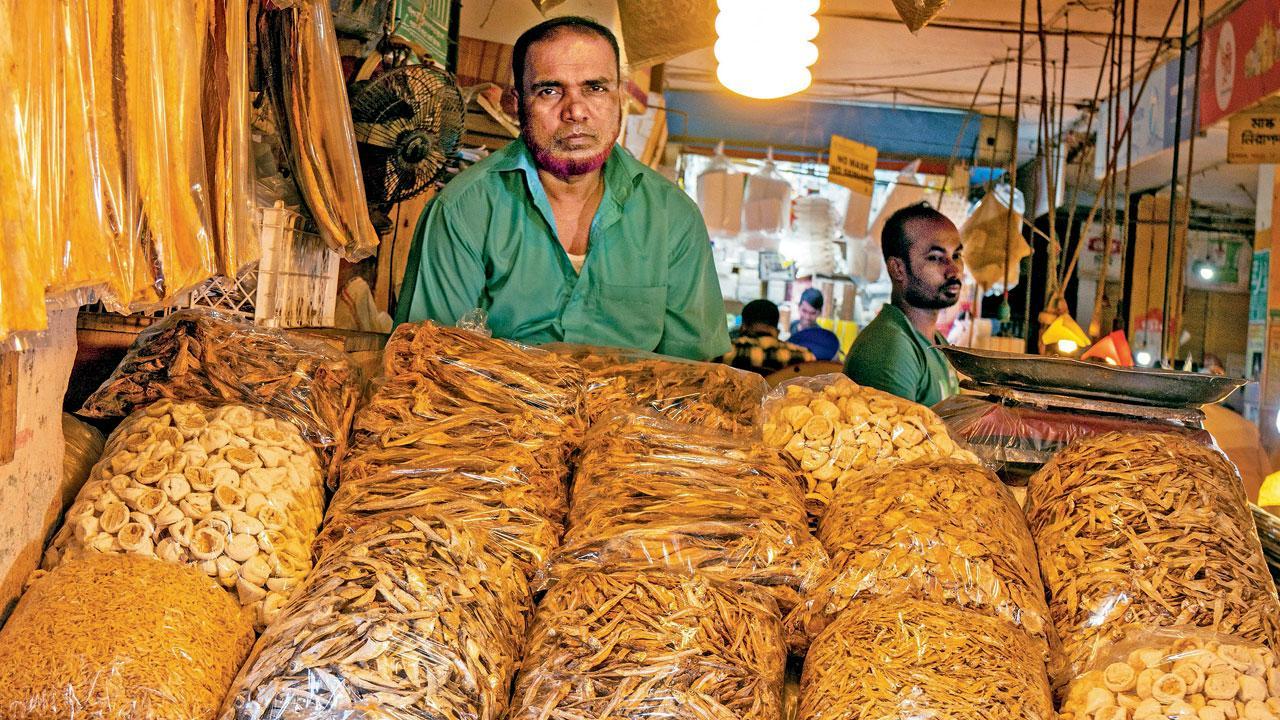
Shutki shira, a pungent and aromatic fermented fish stew made with the extremely hot naga chilli is unique to Sylhet. There is also shatkora, a bitter and highly aromatic cooking citrus used in meat and fish dishes, that originates from the same region. Pics Courtesy/Made in Bangladesh by Dina Begum, Photography © Haarala Hamilton
The most important part for me was to preserve these dishes,” British-Bangladeshi food writer Dina Begum tells us from her home in London. Begum’s new book, Made in Bangladesh: Recipes and Stories from a Home Kitchen (Hardie Grant) which released this month, introduces readers to recipes from each of the country’s eight divisions. It’s her second after the Brick Lane Cookbook that celebrated the diverse flavours of that iconic part of London. “[There is often this assumption] that Dhaka is where all the food is, but it’s not. It’s one of many,” says the author, who was born in Sylhet in the north-east of the country.
ADVERTISEMENT
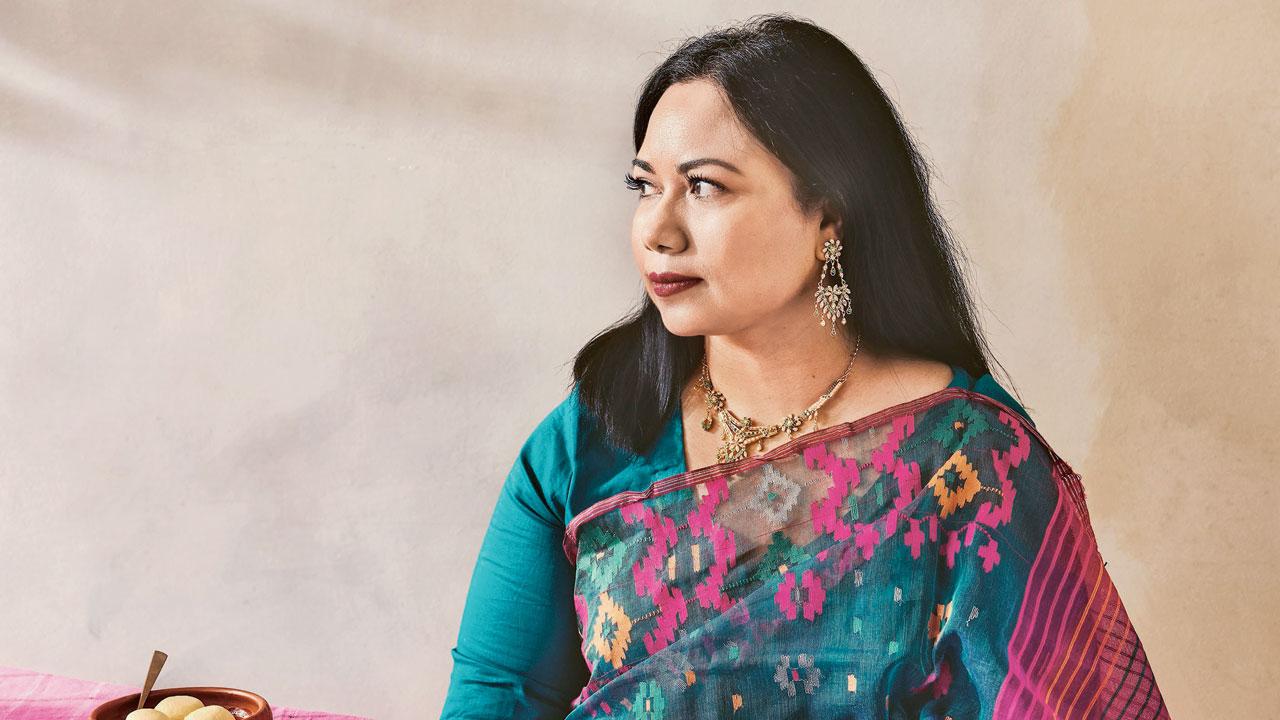
Dina Begum. Pic Courtesy/Habibul Haque, Drik Picture Library
“I wanted to give people a good overview of Bangladeshi cuisine and represent the country’s culture internationally to not just the diaspora but also the audience that doesn’t know much about it.” There was also a need to present a sense of the country’s vibrancy through the recounting of stories, memories and anecdotes about Bangladeshi customs and culture through recipes marking festivals and celebrations. “Often with many countries in the east, especially in South Asia, you don’t see all the positive things that are going on. What you see in the news is the negativity, the natural disasters and volatile events. I wanted to shine a spotlight on the joyousness.”
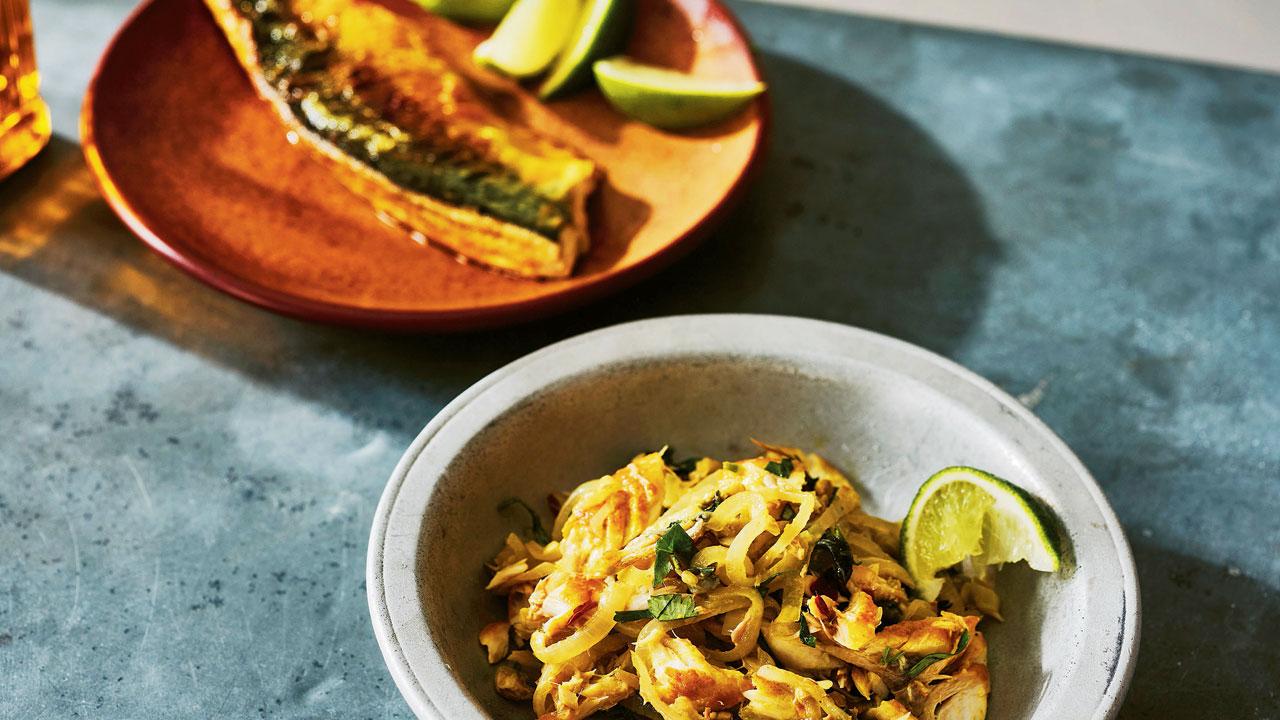
Bhaja Macher Bhorta
For Begum, who moved to England when she was four years old, the book became a way of documenting dishes she learnt from her mother and grandmother, and grew up eating, very few of which have been recorded outside of Bangladesh and are in danger of being forgotten. “In many countries in South Asia, recipes are passed down orally so you just go through estimations, and don’t write them down,” she observes, a fact that presented a challenge during the writing of the book. “The way I learnt to cook was through andaaz and feeling. So when you’re actually writing the recipe, timing, weighing and measuring everything rather than just doing it instinctively, it can become more of a technical thing. That was a bit of a challenge at first because it was not the way I was used to cooking Bangladeshi food. It was almost like approaching the dishes in a new way just so people understand how they are meant to be cooked.”
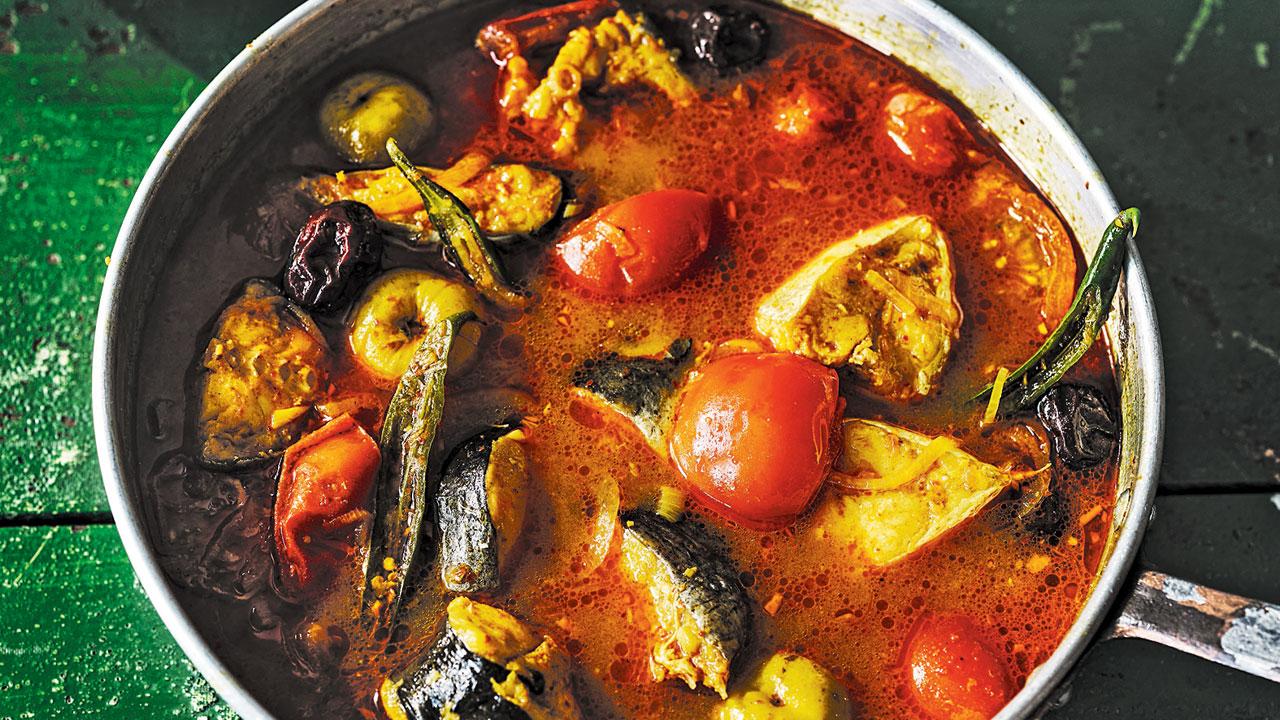
Tenga Shira
Paying homage to the six seasons in the Bangladeshi calendar, Begum’s book divides its recipes into six chapters, showcasing dishes from different regions with introductory lists of pantry staples, whole and ground spices that form the backbone of Bangladeshi home cooking, aromatics, traditional kitchen equipment and sample menus for everyday and celebratory dining. For this writer, whose family traces its roots back to East Bengal, the similarities with the Bengali cuisine—the predominance of fish and sweets, plentiful use of date molasses, flattened rice, mustard oil and the gondhoraj lime, and the popularity of puchka and other similar types of street food—were many.
“There are very many similarities in terms of ingredients and recipes,” admits Begum. “If you go to Dhaka from West Bengal, for instance, you’d probably be familiar with the cuisine there. But the further down the border you go, the more differences you’ll find. If you go to other parts such as Sylhet, Khulna or Chittagong, you’ll see that they are cuisines in themselves. Each region is very distinct.”
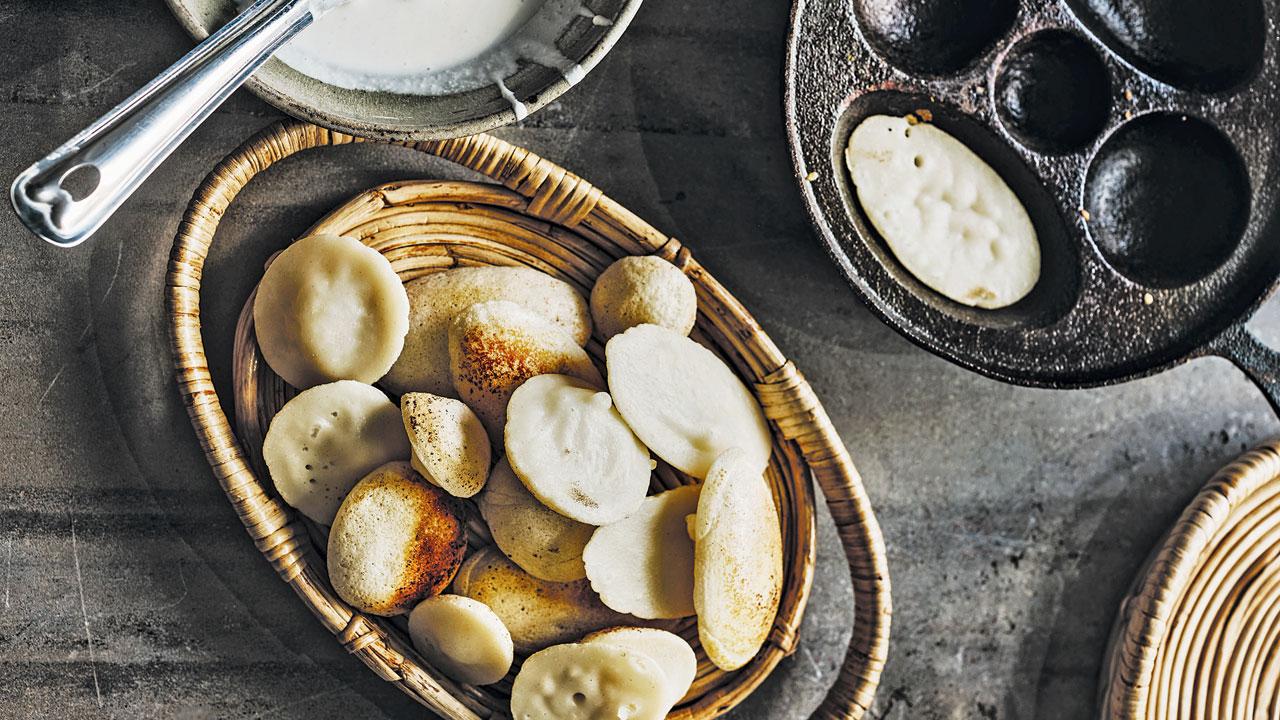
Chitoi Pitha
Shutki shira, a pungent and aromatic fermented fish stew made with the extremely hot naga chilli, for instance, is unique to Sylhet. Shatkora, a bitter and highly aromatic cooking citrus used in meat and fish dishes, also originates from the same region ,while in Chittagong, a spice called chui is commonly used in meat dishes. “As you go further south, you have more southeast Asian flavours and flavours from Myanmar, Indonesia and Malaysia coming through,” says Begum. “So, there are dishes with coconut, tamarind and other ingredients that you wouldn’t normally associate with Bengali food. There are Thai and Burmese influences that have come through both because of trade and proximity.”
Then there also are flavour differences that arise due to religious reasons with Hindu Bengali food comprising more vegetarian dishes which exclude garlic, ginger and onions. “Also, there’s more of a sweetness I would say in West Bengali cuisine from what I have experienced. Sugar isn’t used in savoury dishes in most regions in Bangladesh,” Begum points out.

Shatkora Dhal
Bhorta, a mash made with vegetables, fish and even meat, blended with core ingredients such as mustard oil, chillies and onions, “is the quintessential soul food of Bangladeshi cuisine,” Begum writes in her book, which features a few variations from the classic aloo bhorta made with baked or boiled potatoes to a spicy gorur mangshor bhorta with shredded fried beef and a bhaja macher bhorta made with seared mackerel, “a staple in diaspora Bangladeshi homes, especially in the UK.” “While it’s quite common in West Bengal, in Bangladesh bhorta is on another level with hundreds of varieties. You can make it with practically anything,” Begum tells us.
“Growing up, I didn’t see the flavours of my home represented anywhere…” Begum writes in her introduction, highlighting how the cuisine of Bangladesh in the West, often gets lost “under the umbrella of ‘Indian food’”. While tourism and social media have contributed to the growth of some awareness around Bangladeshi food and culture in the UK and US, “it’s still the case that I don’t see very much represented,” the author shares. “Even though a majority of Bangladeshi and Indian restaurants in the west are owned by Bangladeshis, roughly 80 per cent I’d say, they’re not serving authentic dishes; they feel made up and flavours are not familiar at all. I’d love to see more Bangladeshi restaurants in the UK presenting traditional food.”
Bhaja macher bhorta
Ingredients
180 gms fresh skin-on mackerel fillets
1/4 tsp salt
1/4 tsp ground turmeric
2 tbsp mustard oil
1 large dried red chilli
2 medium onions, finely sliced
2 bird’s eye chillies, chopped
A few fresh coriander (cilantro) sprigs, chopped
1 lime, quartered, to serve (optional)
Method
Rub the mackerel with the salt and turmeric and set aside. Heat the oil in a frying pan over a medium–high heat for about a minute until hot, then add the mackerel fillets, skin-side down. Fry for 2–3 minutes until golden, then turn over and fry for another 2–3 minutes on the other side. Remove from the pan and set aside on a plate to rest for 10 minutes. Keep the pan on the heat but reduce the heat to medium. Add the dried chilli and fry, stirring, for about 2 minutes until the chilli turns dark brown and smoky.
Remove from the pan and transfer to the plate with the fish. Next, add the onions and bird’s eye chillies to the pan, and sauté for about 4 minutes until soft and translucent. Turn off the heat and tip the onion mixture into a mixing bowl. Coarsely crush the red chilli using a pestle and mortar, then add to the bowl with the onions. Use your hands or two forks to finely flake the fried mackerel and add this to the bowl too, along with the fresh coriander. Mix well, pressing down on the onion and fish so that everything is well combined and comes together. Check the seasoning and serve with lime wedges.
 Subscribe today by clicking the link and stay updated with the latest news!" Click here!
Subscribe today by clicking the link and stay updated with the latest news!" Click here!







